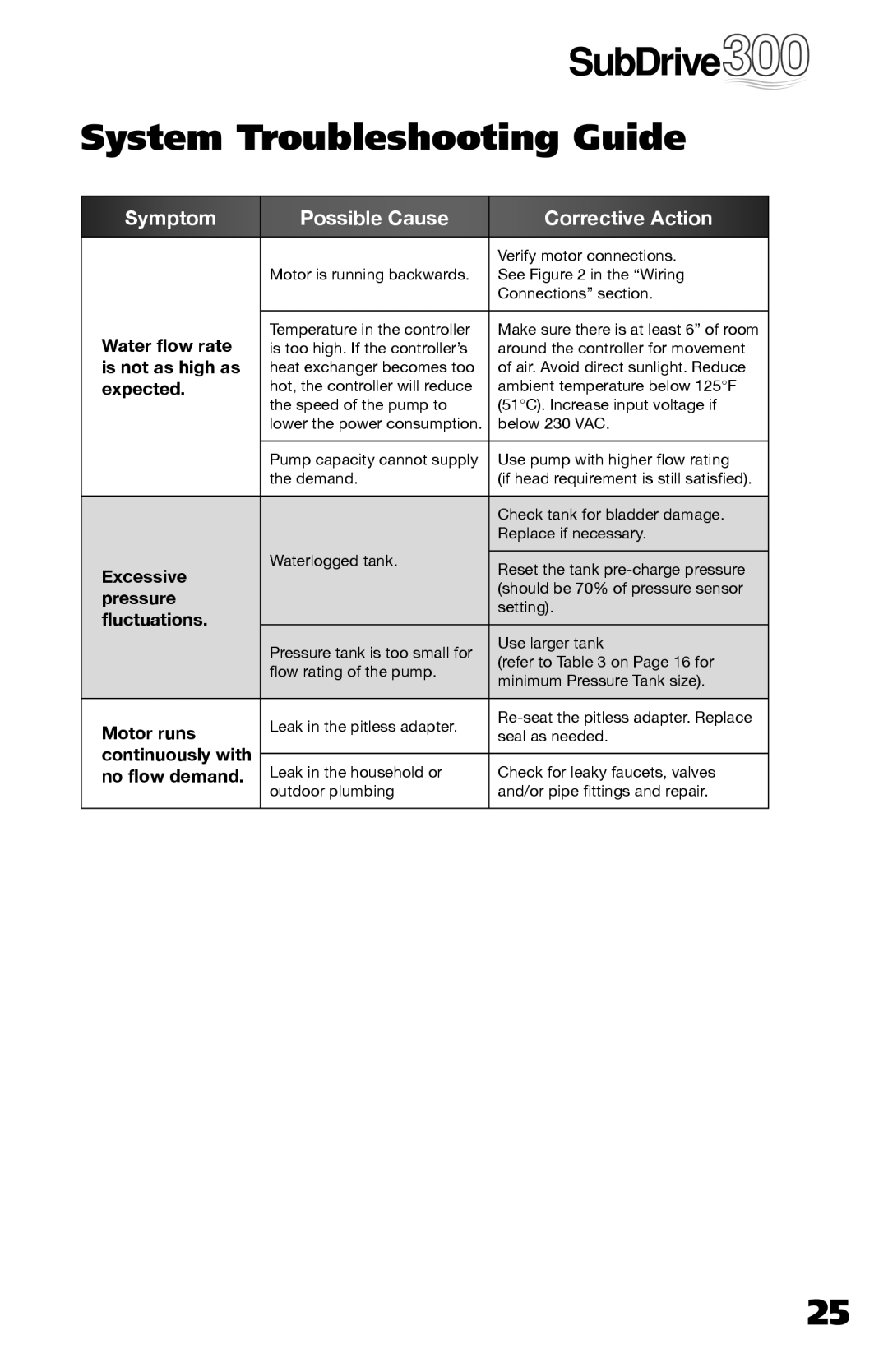
System Troubleshooting Guide
Symptom | Possible Cause | Corrective Action | |
|
|
| |
|
| Verify motor connections. | |
| Motor is running backwards. | See Figure 2 in the “Wiring | |
|
| Connections” section. | |
|
|
| |
Water flow rate | Temperature in the controller | Make sure there is at least 6” of room | |
is too high. If the controller’s | around the controller for movement | ||
is not as high as | heat exchanger becomes too | of air. Avoid direct sunlight. Reduce | |
expected. | hot, the controller will reduce | ambient temperature below 125°F | |
| the speed of the pump to | (51°C). Increase input voltage if | |
| lower the power consumption. | below 230 VAC. | |
|
|
| |
| Pump capacity cannot supply | Use pump with higher flow rating | |
| the demand. | (if head requirement is still satisfied). | |
|
|
| |
|
| Check tank for bladder damage. | |
|
| Replace if necessary. | |
| Waterlogged tank. |
| |
Excessive | Reset the tank | ||
| |||
| (should be 70% of pressure sensor | ||
pressure |
| ||
| setting). | ||
fluctuations. |
| ||
|
| ||
Pressure tank is too small for | Use larger tank | ||
| |||
| (refer to Table 3 on Page 16 for | ||
| flow rating of the pump. | ||
| minimum Pressure Tank size). | ||
|
| ||
|
|
| |
Motor runs | Leak in the pitless adapter. | ||
seal as needed. | |||
| |||
continuously with |
|
| |
Leak in the household or | Check for leaky faucets, valves | ||
no flow demand. | |||
| outdoor plumbing | and/or pipe fittings and repair. | |
|
|
|
25
